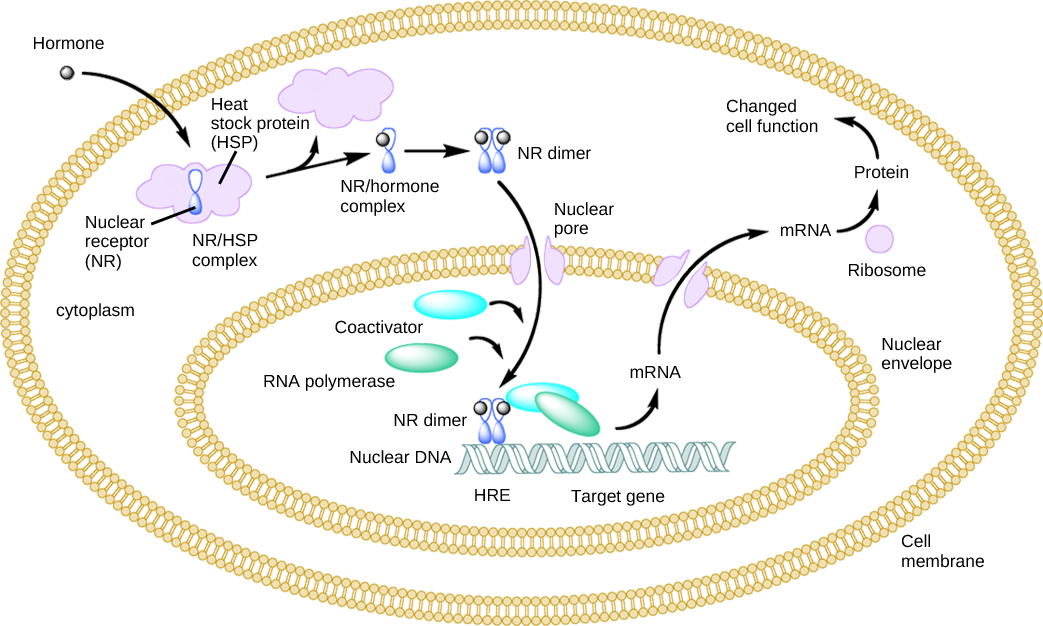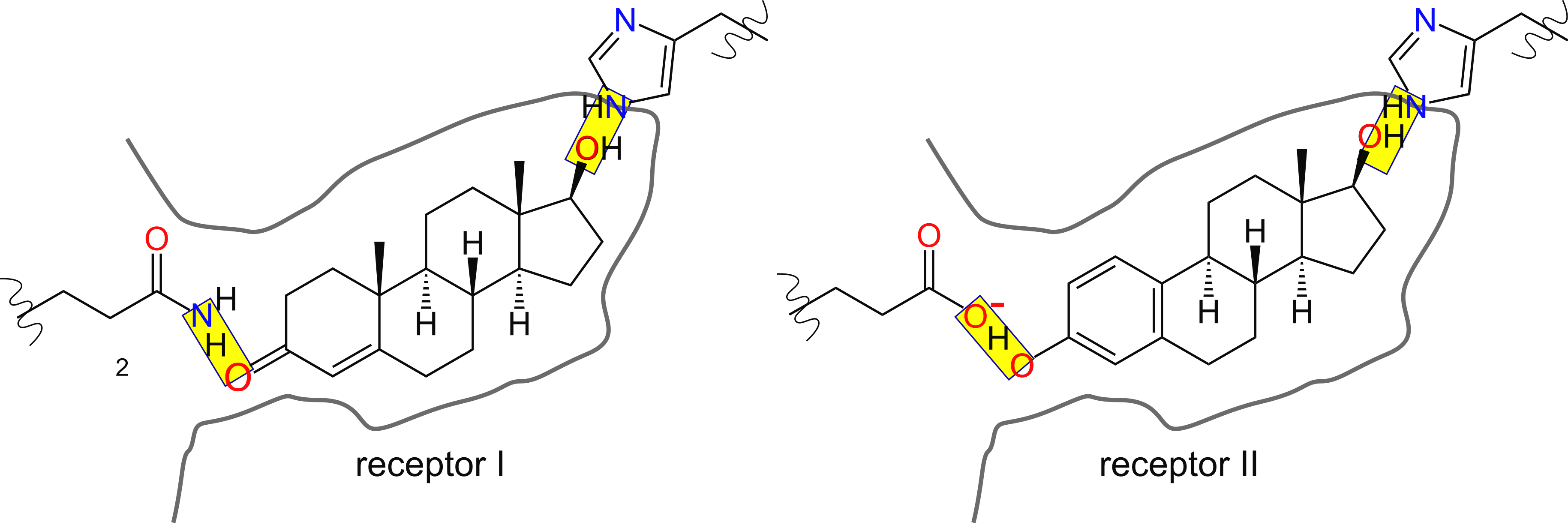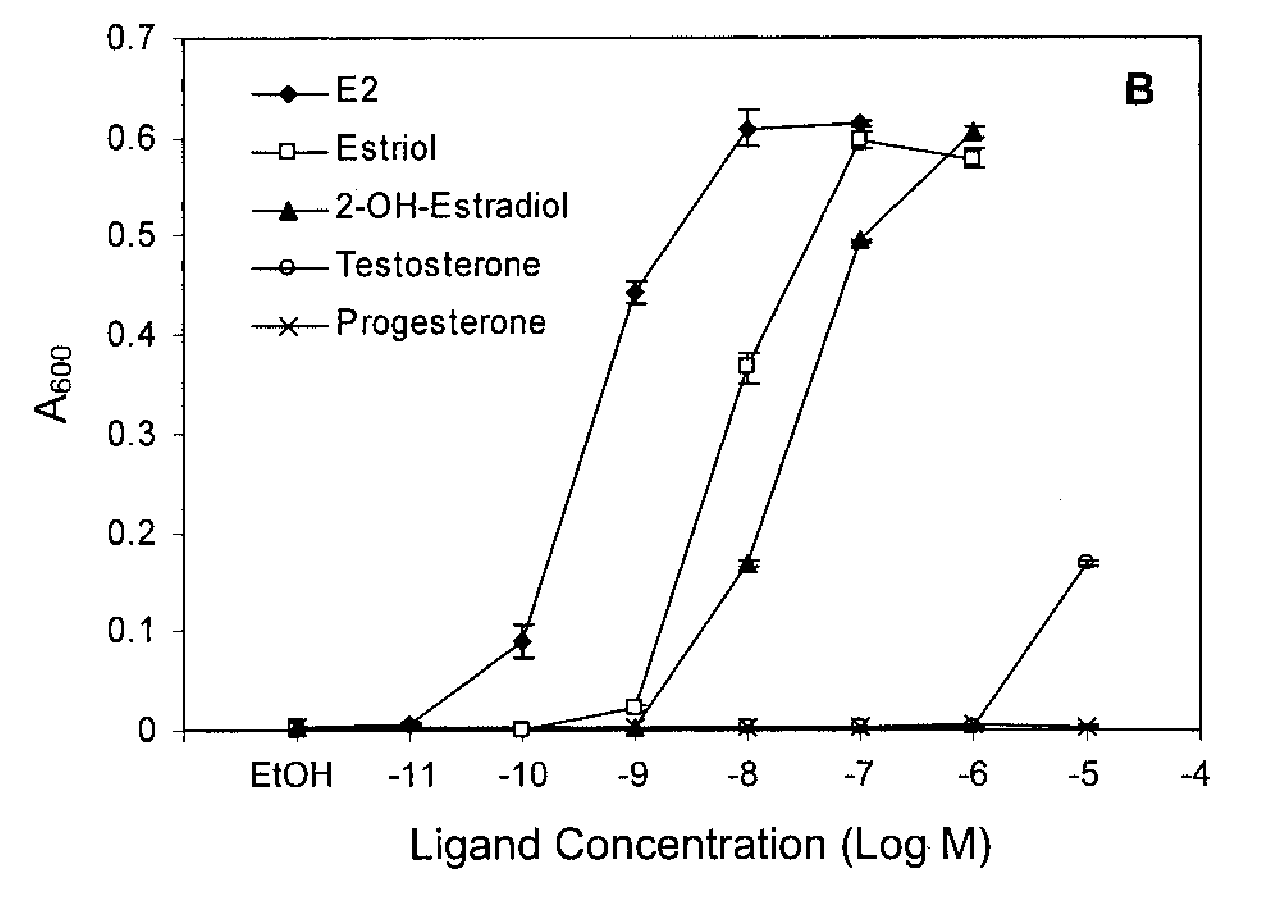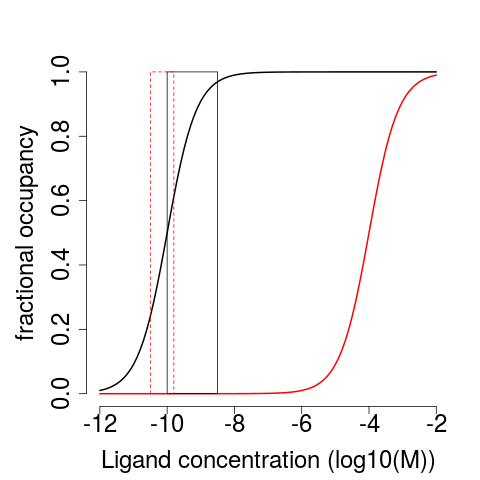First midterm: next Wednesday (10/18) 7 pm in MacKenzie 240C
Midterm will cover thru today (lectures 1-9, homework 1-3, lab 1-3).
Homework sections 3.4 and 3.5 will not be on the exam
Specificity, Affinity, and KD
2016-10-13
Conceptual goals
- Proteins form specific interactions with molecular partners
- Specificity is achieved by creating interactions that can only be fulfilled by one partner, not others
- Interactions are "tuned" to affinities useful for the cell.
Skill goals
- Use structure-based reasoning to predict relative affinities and specificities of different interactions.
- Use $K_{D}$ to characterize the strength of interactions





Estrogen and testosterone bind to different receptors, turning on different genes
- Estrogen binds to the estrogen receptor
- Testosterone binds to the androgen receptor
How do almost identical receptors distinguish between almost identical steroids?

Binding specificity is discrimination between steroids.
Specificity is determined by:
- shape of the pocket
- polar interactions
Affinity measures how strong the interaction is between molecules
Specificity measures the difference in affinity between two (or more) molecules
Estrogen receptor has high affinity for estrogen, low affinity for testosterone
ER is specific for estrogen relative to testosterone
 Chen et al. (2004) JBC 279(32):33855-33864
Chen et al. (2004) JBC 279(32):33855-33864
Steroids have only a small range of blood concentrations
ER estrogen affinty is tuned to is physiological concentrations
ER testosterone affinity is not

The concentration of estrogen at which the receptor is half saturated is the $K_{D}$

Why is it useful for the $K_{D}$ for estrogen to be near its physiological concentration?
Receptor can change signal a change in concentration to the cell
Biochemists use dissociation constants ($K_{D}$) to measure binding affinity
$ML \rightleftarrows M + L$
$M$ is macromolecule (protein)
$L$ is ligand (small molecule)
$K_{D} = \frac{[M][L]}{[ML]}$
What are the units of $K_{D}$?
Units are concentration
What does does a $K_{D}$ of X units mean?
Concentration at which the protein is half-saturated with ligand.
We can measure $K_{D}$ by following $\theta$ versus $[L]$
$K_{D} = \frac{[M][L]}{[ML]}$
$[ML] \times K_{D} = [M][L]$
$[ML] = \frac{[M][L]}{K_{D}}$
$\theta = \frac{[ML]}{[M] + [ML]}$
$\theta = \frac{[M][L]/K_{D}}{[M] + [M][L]/K_{D}}$
$\theta = \frac{[L]/K_{D}}{1 + [L]/K_{D}}$
$\theta = \frac{1}{1 + K_{D}/[L]}$
What determines affinity?
Loss of a hydrogen bond goes a long way towards explaining the specificity against testosterone
